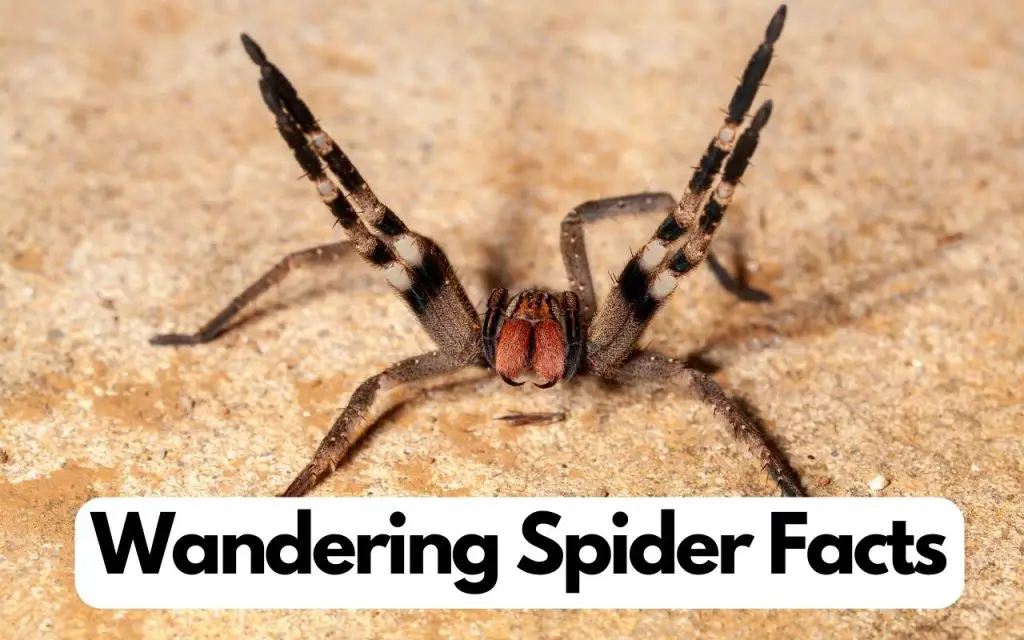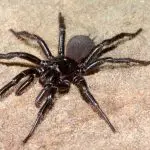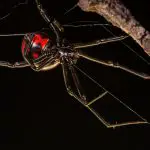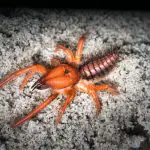Last updated on July 12th, 2023 at 01:48 pm
When you think of deadly spiders, there are a few names that spring to mind – but none more infamous than the Brazilian Wandering Spider. This species is reputed to have the most toxic venom of any spider, having a bite which causes horrendous side-effects like priapism and convulsions.
What you may not know, however, is that the Brazilian Wandering Spider name is actually used for a few species. The most common, and perhaps the most medically significant in the group are Phoneutria nigriventer and Phoneutria fera.
In this post, I’ll tell you more about these two species, from where they live, to what they eat. To keep things simple, I’ll just refer to them both as the “Brazilian Wandering Spider”, given how similar they are. Let’s dive in…
Quick Facts
To kick things off, here are some fascinating factoids about the Brazilian Wandering Spider:
- They belong to the genus ‘Phoneutria’, which translates to ‘murderess’ in Greek.
- They are known for their highly potent venom.
- Wandering Spiders are nocturnal creatures.
- They are also known as ‘banana spiders’ due to their tendency to hide in banana plants.
- They are not web-weavers but active hunters. This is called ‘cursorial’ hunting.
- It’s considered one of the most dangerous spiders in the world.
Other Common Names
The Brazilian Wandering Spider goes by several other names. The most common is the ‘banana spider’, thanks to their notorious habit of stowing away in banana shipments. In their native Portuguese, they’re known as ‘aranhas-armadeiras’, translating to ‘armed spiders’ – a reference to their aggressive defense posture.
Brazilian Wandering Spider Venom
Possessing one of the most potent venoms among spiders, the Brazilian Wandering Spider’s bite is a cause for concern. Its venom is a complex cocktail of toxins, proteins, and peptides.
The main component that gets everyone’s attention is the neurotoxin, called PhTx3, which can interfere with the functioning of our nervous system, leading to a variety of symptoms.
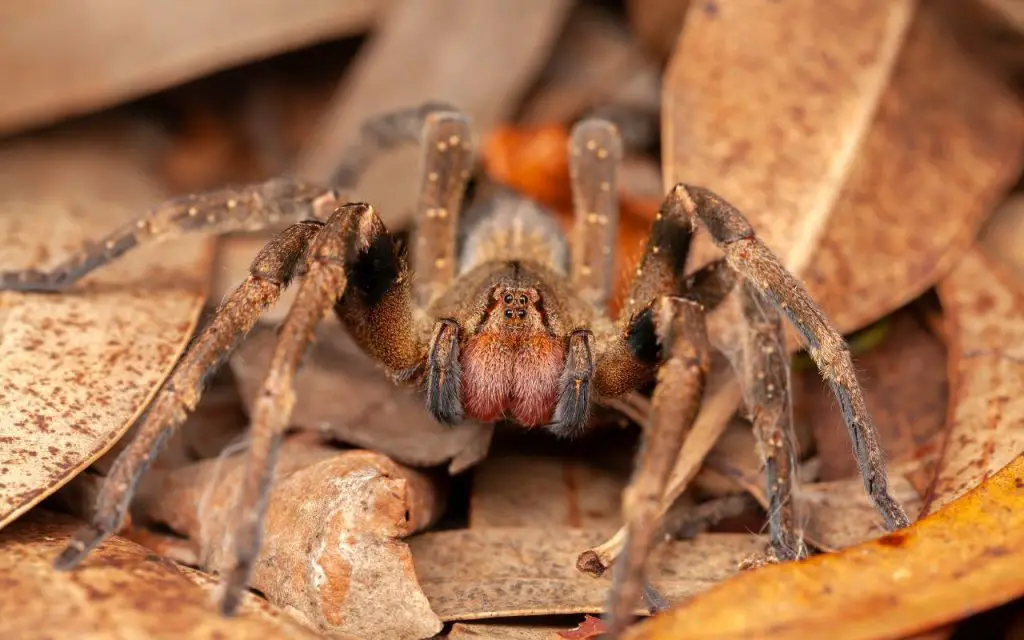
What’s the Benefit of Having Such Strong Venom?
With venom potent enough to kill a human, one might wonder why this spider needs such a powerful weapon. The answer lies in its lifestyle.
Brazilian Wandering Spiders are active hunters and their venom is primarily used to incapacitate prey quickly. The venom’s potency also serves as an effective deterrent against potential predators.
Brazilian Wandering Spider Deaths
Despite the notorious reputation, actual deaths from Brazilian Wandering Spider bites are rare. This is largely due to the rapid medical attention available in areas where these spiders are common. Plus, these spiders don’t always inject venom when they bite – a dry bite can occur.
This actually common in venomous animals, including spiders and reptiles. Occasionally they bite and decide to not inject any venom. The point of this is to conserve it, given that it is energetically costly to produce.
Brazilian Wandering Spider Size
Being quite large and impressive compared to most arachnids, adult Brazilian Wandering Spiders can reach a leg span of up to 7 inches (18 cm). The body size excluding the legs can be up to 2 inches (5 cm). Their size contributes to their intimidating presence.
If you’d to learn more about why they get so big, check out my article on Brazilian Wandering Spider size for more info!
Brazilian Wandering Spider Location and Habitat
Brazilian Wandering Spiders are native to South America. Here’s a quick rundown of their range and preferred habitats:
| Region | Preferred Habitat |
|---|---|
| Brazil | Tropical forests, banana plantations |
| Argentina | Rainforests |
| Costa Rica | Banana plantations |
| Colombia | Tropical rainforests |
| Peru | Amazon rainforests |
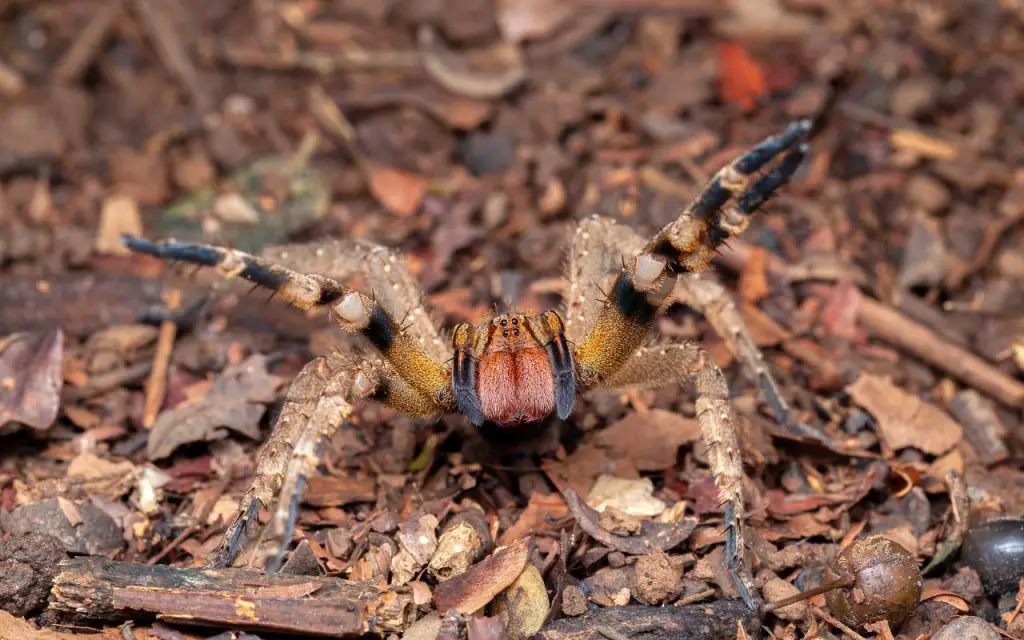
Brazilian Wandering Spider Speed
An adept hunter, the Brazilian Wandering Spider can move quickly when chasing prey or evading threats. While exact speed measurements can vary, some sources report that these spiders can achieve speeds up to 1 meter per second.
What Does the Brazilian Wandering Spider Eat?
The Brazilian Wandering Spider’s diet consists mainly of insects, other spiders, and occasionally small amphibians and reptiles. Their potent venom allows them to tackle prey larger than themselves, making them one of the apex micro-predators in their habitat.
Final Thoughts…
While the Brazilian Wandering Spider might seem terrifying to many, as an arachnid enthusiast, I find them to be incredibly fascinating. Their potent venom, hunting prowess, and adaptation to diverse habitats reveal the intricate beauty of the evolutionary process.
Just remember, these spiders, like all creatures, play a vital role in our ecosystem. Respect, not fear, should be our response to these remarkable arachnids.
The truth is that most bites are accidental, but they do occur. The fact that so few deaths occur each year is a testament to the effectiveness of the antivenom that has now become widely available.
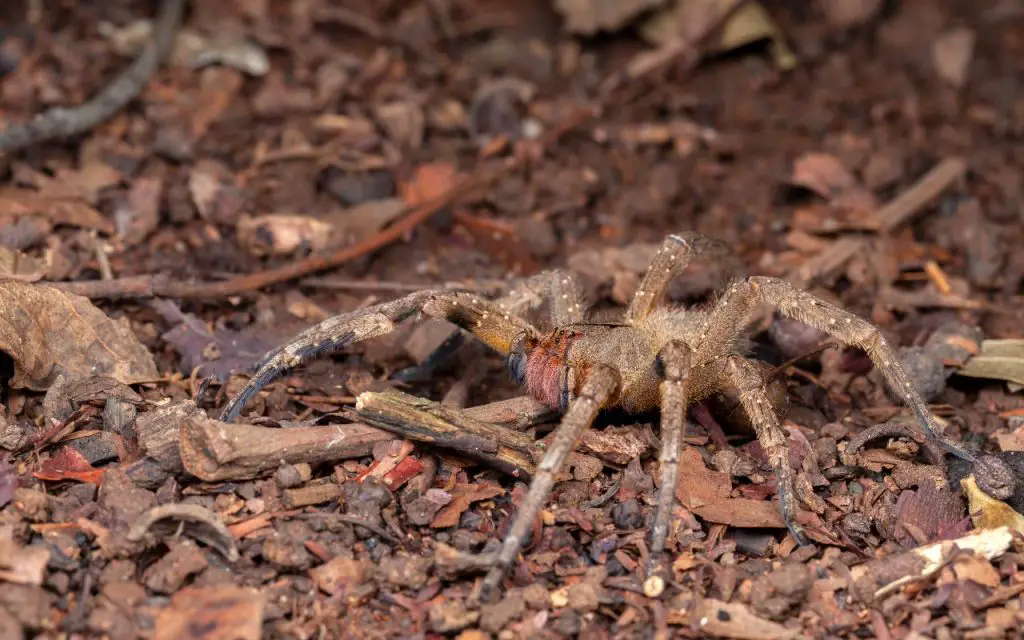
What happens if you are bitten by a Brazilian wandering spider?
Immediately after a bite from a Brazilian Wandering Spider, you will experience localized pain. Then, within 5 to 15 minutes the area around the bite will swell. The swelling can spread to most of a limb, for example. Finally, neurological symptoms like coldness, sweating, and convulsions will set in.
Do wandering spiders jump?
Wandering Spiders are excellent at jumping. They can jump several feet when surprised, and may occasionally use this as a tactic to evade predators. Jumping at you isn’t part of how bites happen though. When faced with humans, Wandering Spiders usually stand their ground and use their threat display of raised legs to warn us away.
Is Brazilian wandering spider friendly?
Wandering Spiders are not friendly. As a general rule, they are relatively calm, but can also be defensive. They tend to see humans as a threat, and will not take to being handled easily. That said, they are not aggressive, and most bites happen when someone accidentally touches one or tries to kill it.
Are Brazilian wandering spiders in Australia?
Brazilian Wandering Spiders are not found in Australia. The only species in Australia that get as large as Wandering Spiders are the Huntsman Spiders. At a distance they may appear relatively similar, but Huntsman Spiders are completely harmless to humans.

